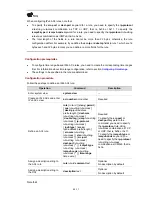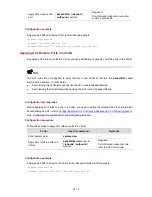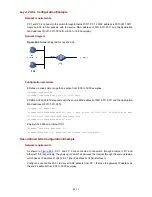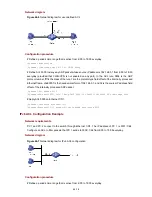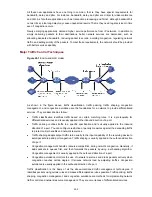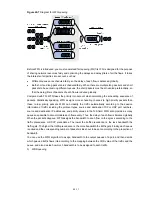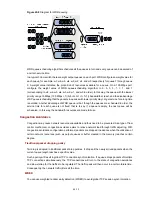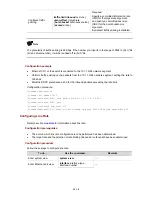
protocol or the port number of an application. Normally, traffic classification is done by checking the
information carried in packet header. Packet payload is rarely adopted for traffic classification. The
identifying rule is unlimited in range. It can be a quintuplet consisting of source address, source port
umber, destination address, and destination port number. It can also be simply a
Prior
T
In
s
number, protocol n
network segment.
ity rust Mode
troduction to precedence type
1) IP precedence, ToS precedence, and DSCP precedence
Figure 45-2
DS field and ToS byte
0
7
6
DSCP
M
B
Z
Class Selector
codepoints
Differentiated Services
Codepoint (DSCP)
RFC 2474
Currently
Unused
RFC 1122
IP Type of Service (ToS)
RFC 791
Must
Be
Zero
RFC 1349
DS-Field
(for IPv4,ToS
octet,and for
IPv6,Traffic
Class octet )
IPv4 ToS
byte
1
5
4
3
2
Bits:
0
7
6
1
5
4
3
2
Bits:
Preced
ence
Type of
Service
CU
z
z
of 0 to 15.
er is also known as DS field. The first six bits (bit 0
ed service codepoint (DSCP) in the range of 0 to 63,
nd bit
Table 45-2
Description on IP Prec
The ToS field in an IP header contains eight bits numbered 0 through 7, among which,
The first three bits indicate IP precedence in the range 0 to 7.
Bit 3 to bit 6 indicate ToS precedence in the range
z
In RFC2474, the ToS field in IP packet head
through bit 5) of the DS field indicate differentiat
and the last two bits (bit 6 a
7) are reserved.
edence
IP Precedence (decimal)
IP Precedence (binary)
Description
0 000
Routine
1 001
priority
2 010
immediate
3 011
flash
4 100
flash-override
5 101
critical
6 110
internet
7 111
network
In a
pack
);
network providing differentiated services, traffics are grouped into the following four classes, and
ets are processed according to their DSCP values.
z
Expedited Forwarding (EF) class: In this class, packets can be forwarded regardless of link share
of other traffic. The class is suitable for preferential services with low delay, low packet loss ratio,
low jitter, and assured bandwidth (such as virtual leased line
45-4



